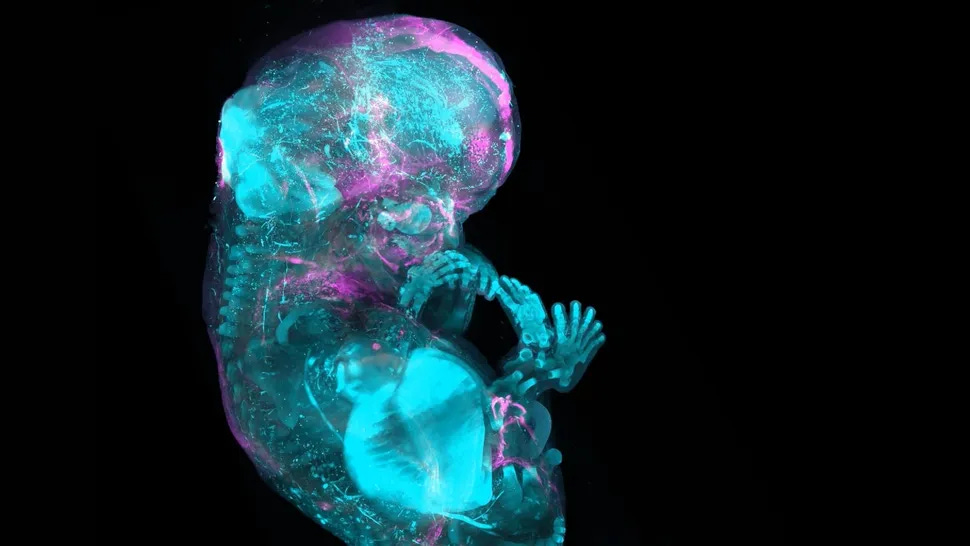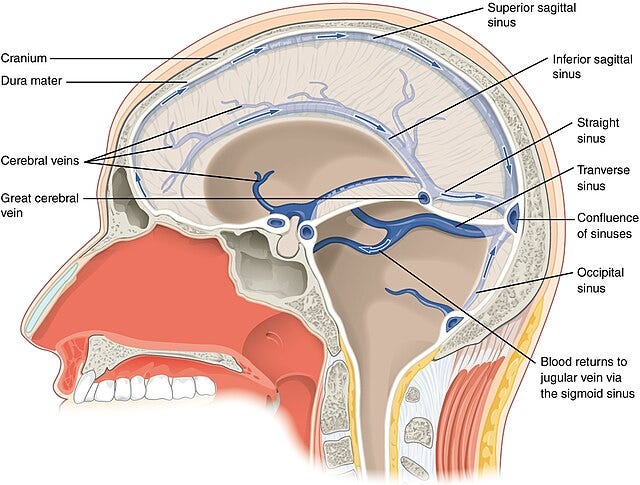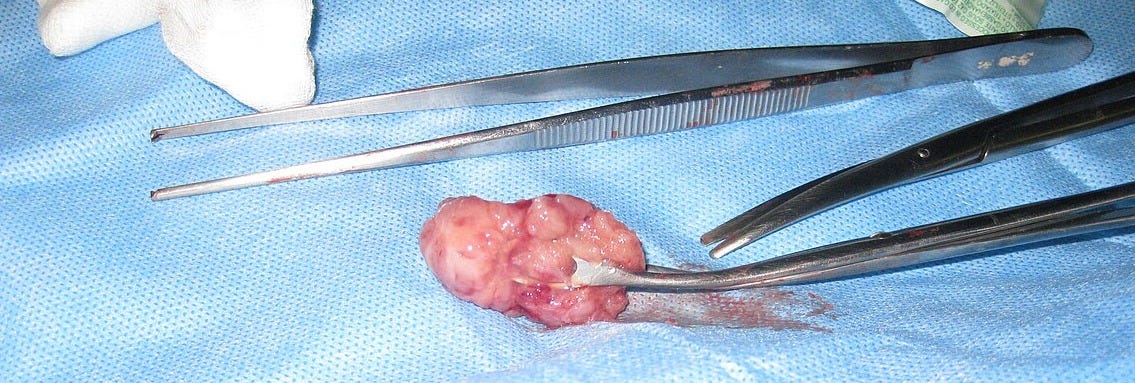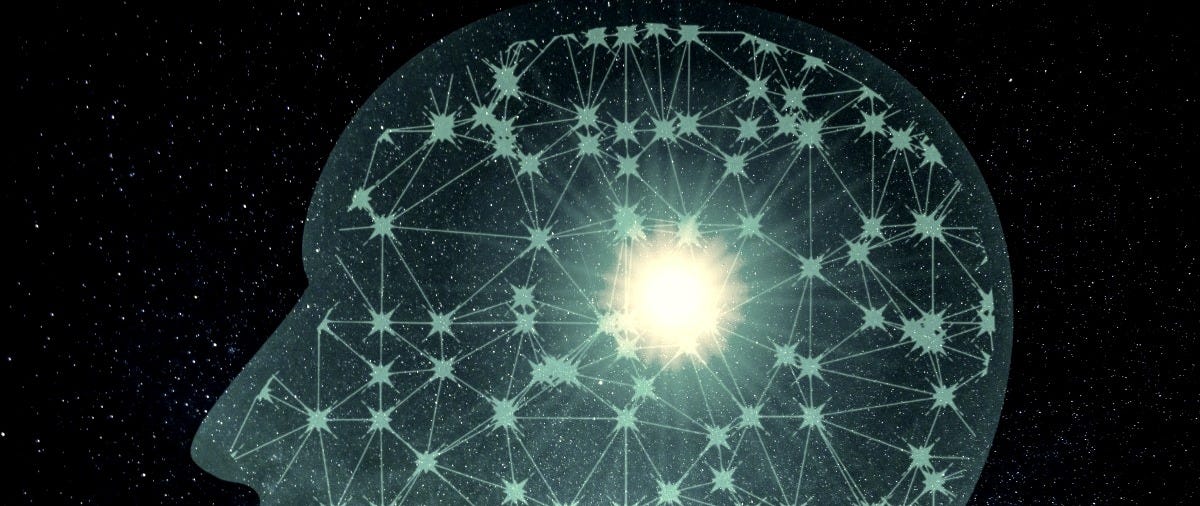Sci-Ed Update 336
Human Cell Atlas update, our teaching persona, brain's community of cells, tonsil removal affects stress, skin mites becoming part of us, aging updates, axon structure revised, and more!
Pearls-on-a-String: A Perspective Shift on Axonal Morphology

The core finding of the paper [discussed in the linked post] ] is that neuronal axons are not simple cylinders, but instead display a beaded “pearls-on-a-string” nanostructure under normal conditions.
Importantly, the morphology of these varicosities sensitively modulates the speed of action potential propagation, and seemingly functional plasticity as well. The application of 100 pulses at 100 Hz high-frequency stimulation caused an 8% increase in varicosity length and a 17% increase in width after five minutes. Electrophysiological recordings after this stimulation showed that action potential conduction was slowed, indicating a functional repercussion of this physical response.
This paper serves as a reminder that we should not take any of our scientific assumptions for granted. Much of our understanding of basic cellular morphology relies on observations of tissues that have been distorted by harsh fixation procedures, which can obscure the true architecture and function of cellular components in their native environment.
Read more→ AandP.info/63b
Obesity dipped in U.S. adults last year for the first time in more than a decade
Obesity dipped slightly in U.S. adults last year for the first time in more than a decade, a study found.
The researchers suggested that might be due, in part, to the rise of weight loss drugs like Ozempic.
However, other medications or factors — such as the effects of the Covid pandemic — could also have played a role.
Read more→ AandP.info/2tq
Skull Marrow and Sinuses Hold the Key to Brain-Body Immune Link
The dural sinuses and skull bone marrow serve as key communication hubs between the brain’s central immune system and the body’s peripheral immune system. These regions may act as “traffic lights,” allowing immune signals to flow between the brain and body, challenging the traditional view of the blood-brain barrier as an absolute divide.
Researchers found inflammatory activity in these areas correlates with inflammation in both the brain and body, offering new insights into conditions like depression. This discovery could pave the way for innovative treatments targeting these hubs to address immune-related conditions more precisely.
Key Facts:
Dual Role of Skull and Sinuses: The skull marrow and dural sinuses function as bridges linking central and peripheral immune systems.
Inflammation Correlation: Inflammatory activity in these hubs aligns with inflammation markers in both the brain and body, in depression and healthy individuals.
Therapeutic Potential: These hubs could be targeted to develop treatments for immune-related conditions, including depression.
Read more→ AandP.info/3i3
‘A universal challenge’: Increasing lifespan dulled by nearly a decade of disease effects
The mean healthspan-lifespan gap among WHO member states rose from 8.5 to 9.6 years from 2000 to 2019.
The gap in healthspan-lifespan were greater among women, both in the U.S. and globally.
Read more→ AandP.info/6yd
The Blood of Exceptionally Long-Lived People Shows Crucial Differences
[A] recent study, published in GeroScience, has unveiled some common biomarkers, including levels of cholesterol and glucose, in people who live past 90.
[Researchers] found that, on the whole, those who made it to their hundredth birthday tended to have lower levels of glucose, creatinine and uric acid from their sixties onwards.
Although the median values didn't differ significantly between centenarians and non-centenarians for most biomarkers, centenarians seldom displayed extremely high or low values.
Read more→ AandP.info/m6f
Skin Mites That Mate on Our Faces at Night Are Gradually Merging With Humans
Most people on Earth are habitats for mites that spend the majority of their brief lives burrowed, head-first, in our hair follicles, primarily of the face.
In fact, humans are the only habitat for Demodex folliculorum. They are born on us, they feed on us, they mate on us, and they die on us.
Their entire life cycle revolves around munching your dead skin cells before kicking the teeny tiny bucket.
So reliant is D. folliculorum on humans for their survival, research suggests, that the microscopic mites are in the process of evolving from an ectoparasite into an internal symbiont – and one that shares a mutually beneficial relationship with its hosts (that's us).
In other words, these mites are gradually merging with our bodies so that they now live permanently within us.
Read more→ AandP.info/ymb
Stress-Related Disorders Among Young Individuals With Surgical Removal of Tonsils or Adenoids
Question Is undergoing surgical removal of tonsils or adenoids in early life associated with increased subsequent risk of stress-related disorders?
Findings In this cohort study of 1 050 287 children and young adults in Sweden, those who underwent surgical removal of tonsils or adenoids exhibited a higher risk of stress-related disorders, especially posttraumatic stress disorder, compared with unexposed individuals or unexposed full siblings.
Meaning These findings suggest a potential role of adenotonsillar diseases or associated health conditions in the development of stress-related disorders.
Kevin Patton comment→ And all along, I thought it was my workload!
Read more→ AandP.info/dos
Your 'brain community' could be the secret to ageing slower. Here's why
The key to a good neighbourhood is the people in it: it's made better by the (annoyingly cheery) do-gooder who brings in your parcels, or worse by the grouchy neighbour who lets their dog poop outside your door.
The same is true of your brain. That's according to a new study finding brain cells function like a community. These cells, it turns out, can actively create a nurturing environment that builds up the health and resilience of their cell neighbours. But some cells act as bad neighbours, spreading stress and damage.
Across your whole life, this community influences how your brain ages. Too many bad relationships may mean you age faster and experience issues like age-related memory loss as a result. However, a healthy brain community can work together to keep ageing at bay.
The researchers, from Stanford University in the US, think they may be able to use these new insights to develop treatments that could slow or even reverse ageing.
Read more→ AandP.info/38e
Our Teaching Persona in Anatomy & Physiology Class
In Episode 137 of The A&P Professor podcast, host Kevin Patton explores the significance of playfulness, transparency, and authenticity in the teaching persona.
Drawing from personal experiences training animals, Kevin explains how play is integral to learning, highlighting the importance of incorporating a sense of fun and embracing failures in the classroom. He also emphasizes the value of transparency by sharing our own mistakes and weaknesses, asserting that being open about flaws fosters authenticity and builds trust with students. By acknowledging vulnerabilities and demonstrating a genuine willingness to learn, educators can create a supportive and engaging learning environment.
This thought-provoking discussion reminds us of the power of play and authenticity in effective teaching.
00:00 | Introduction
00:47 | Our Teaching Persona
14:23 | Taking Responsibility
22:03 | Gestures Impart Meaning
32:34 | Playing Around
42:54 | Authenticity
47:46 | Staying Connected
To listen to this episode, click on the play button above ⏵ (if present) or this link→ theAPprofessor.org/podcast-episode-137.html
Scientists take huge step forward in mapping all 37 trillion cells in the human body

The human body contains around 36 trillion to 37 trillion cells, and researchers are mapping out where every one of those cells lives.
Scientists with the Human Cell Atlas (HCA), an international research consortium, have profiled 100 million cells from more than 10,000 people around the world. Working in over 100 countries, the researchers aim to pinpoint similarities and differences in the cells of people from different demographics and genetic backgrounds.
By 2026, the team plans to unveil an atlas of the whole human body that details the location, identity and function of each cell at different stages of life. That atlas will just be a first draft; later iterations could include data from billions of human cells, the scientists project.
Read more→ AandP.info/i3f










